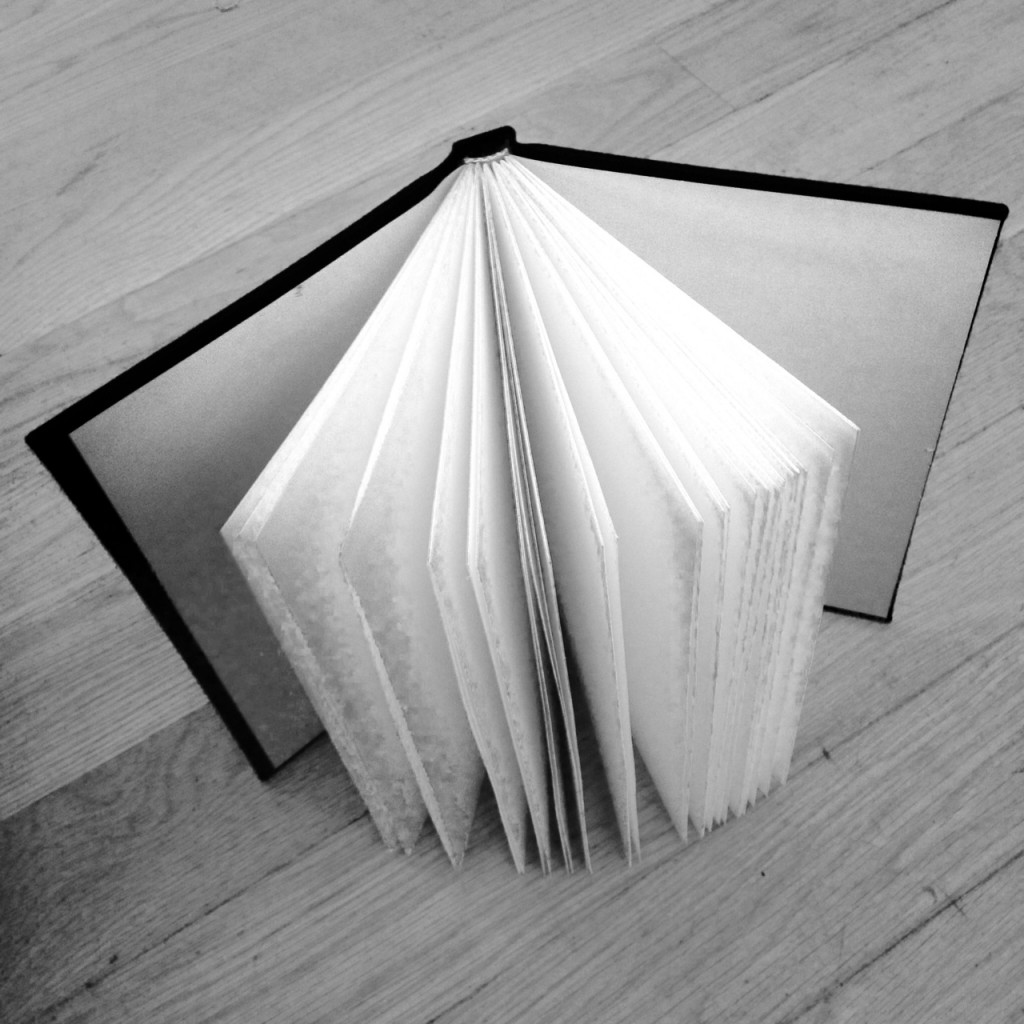It seems to me an interest in bookbinding is an interest that goes beyond the love of books and the act of reading: it’s really a preoccupation with how things come to be, an origin story for an object so ubiquitous we forget it had to be sewn and stitched together in the first place. It’s a desire to know where this amazing thing comes from. For me, it’s not only an aesthetic interest in the formal object but one that I know stems from wanting desperately to understand how those written words or printed images came into existence, in all senses, how they got on that page, how the ideas of another ended up in front of me. Big statement: Bookbinding (with a capital B) is an attempt to apprehend the genius of art through the mechanics of its physical production. Like if I break it down enough—if I can identify the correct execution of a Coptic stitch—all will become clear.
So that’s where I was coming from when we gathered together one rainy weekend for an introductory bookbinding tutorial. As my opening remarks should have made apparent, I was prepared to nerd-out; in the end I was dutifully out-nerded by our immensely talented and generous instructor and the whole process itself. We focused most of our time on making a hard cover book, using the sewing over tapes binding technique, an effective and nominally basic method for hand-sewn editions. With this technique, the individual signatures are bound together via your trusty waxed linen thread and the titular linen tapes that, positioned across folded edges of the stacked signatures and sewn over so many times, become an integral part of the book’s eventual spine.
We began, as all books do, with the page(s). There’s a lot to confront in bookbinding: the mystique of making, the requisite craftiness, the math. Six signatures comprised of three sheets each (or four depending on the thickness of the paper), each sheet folded in half width-wise—don’t forget to crease with confidence using the bone folder!—to make four pages, so that’s twelve pages in a group, 72 in the whole book.

Individual signatures prepared, now to introduce the means through which they will come and stay together, the sewing holes. This step is doubly terrifying. One, because you’re eyeball measuring where to place these holes, the holes through which you will sew your book together, thereby determining the structural integrity of the whole project, and do you know how much self-doubt the idea of eyeballing conjures in the soul of a first-time binder? A lot. And second because the tool designated to punch the holes—through three sheets of heavy paper, behind which (i.e., out of sight) lie your very soft fingertips and very pierce-able palm—is insanely sharp. This is the awl.
Drama overstated but crisis averted, the defining process, the sewing itself, is so logical and repetitive that it certainly must become like second nature for the experience binder, but so far for me retained the delicate, don’t-think-about-it-too-much complexity that all needle and thread and knot projects hold.
Through a series of over-and-under-the-tapes, in-and-out-of-our-punched-holes maneuvers, each signature became complete in itself and subsequently had another added to it, each pass of the needle ever tightening and strengthening our book.
The French knot alluded to in the title of this post is a tricky move added with the incorporation of later signatures, a multi-tiered looping technique designed to really eliminate any gaps or swell between signatures and ensure the durability of the binding.
This—compact, exposed 72-page assemblage—is the book block. Going step-by-step through all the folding and sewing and making of this object requires a high level of meticulousness, patience, and thought, qualities which, to return to the loftier implications of what makes a book, are also required of reading what’s inside it, what’s between the covers, within the case that we’ve now started working on and has been just-so evenly spaced and eyeballed measured and that, in your over eagerness to complete the project, you inadvertently get glue all over and place off-kilter so the end paper is sticking out and the whole thing just opens and closes a little off. But, it is a book, and it’s wonderful.

For further, actual instructions on how to hand-bind a book using the sewing over tapes with a French knot technique, stay tuned for more tutorials to be taught by Alexandra Williams!
By Emma Drew, Volunteer




